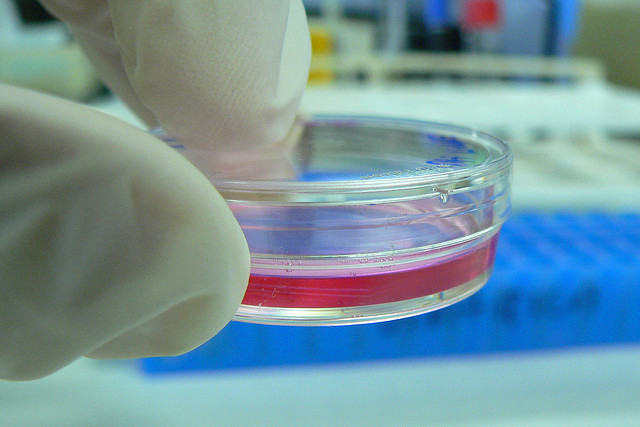Personalized medicine seeks to develop new treatments for broad diseases like cancer, based on individual patient response. To make this type of tailor-made drug development a reality, researchers at McMaster University in Canada have developed a method of growing synthetic human tissue to study the effects of various drugs.
While in vitro models of human tissue already exist, this process can create tissue to model a variety of different body states. The technique could help researchers understand why some drugs are effective in some, but not in others, to drive drug innovation and improvement for more personalized treatments.
“If you go to your favourite clothes store to buy a t-shirt, you have 16 different sizes to choose from, but if you get a prescription for a drug from your doctor, there are no variations,” said Dr. Maikel Rheinstadter, biophysicist and associate professor in McMaster’s Department of Physics and Astronomy. “For adults, everyone takes the same drug, but we all have slightly different body compositions. Even drugs like aspirin and ibuprofen work differently depending on your body composition. It’s a question of finding the right drug composition that works with your body.”
The synthetic human tissue could be used to study hormones, enzymes and vitamins, and what effect each of these compounds has on the body. Researchers could even study sugar or caffeine to understand their effects on different body compositions.
“We create these tissues from the bottom up,” said Rheinstadter. “We can mimic a person who is healthy, someone with high cholesterol, someone with arthritis, someone who is older. We can even make things like synthetic Alzheimer’s tissue. The key is creating these tissues.”
The tissue is grown on a silicon chip in a petri dish, with the drug in question being added to the sample. The tissue is then inserted into a special chamber of an x-ray diffractometer, which uses x-rays to take images of the tissue and allows the researchers to see how the drug is interacting with the tissue.
Using a computational microscope, the researchers are able to study molecular motion in the tissue sample, giving them an indication as to how it’s responding to the drug. According to Rheinstadter, his McMaster lab is just one of a few in the world capable of performing this type of analysis.
“This process allows us to get very detailed information about how drugs work in various types of tissue and get the results very quickly,” said Rheinstadter. “Five years ago it would have taken months on a super-computer to study a drug but with this process, we can now study a drug overnight.”
As well as being a potential alternative to expensive animal testing, the technique could help drugmakers rapidly identify drugs with the most promise in preclinical studies. Rheinstadter’s team has already used the synthetic tissue to show that the active ingredient in turmeric – known as curcumen – could help slow the generation of plaques characteristic of Alzheimer’s disease.












Join or login to leave a comment
JOIN LOGIN